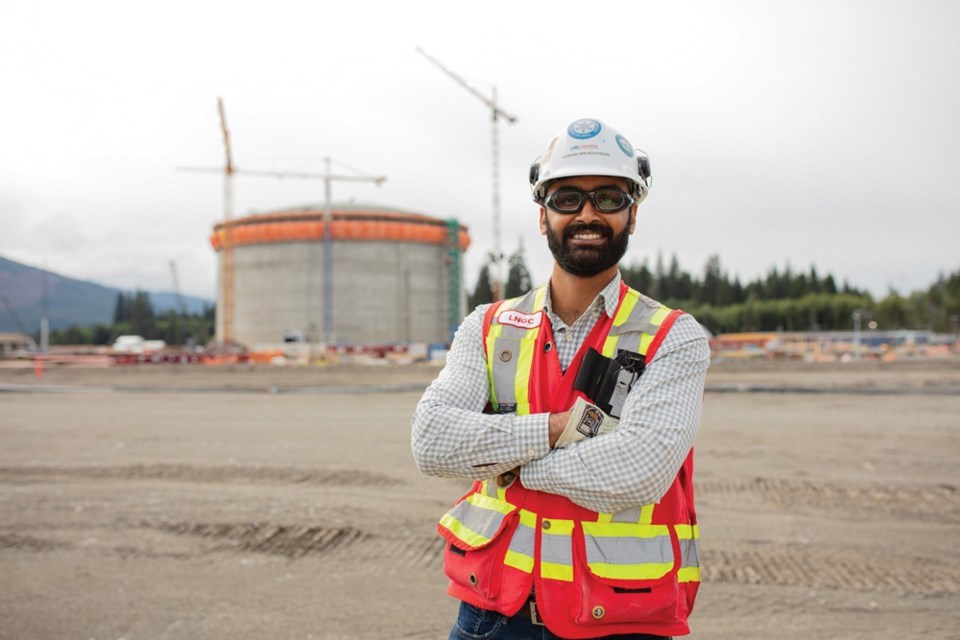One of the world’s largest LNG tanks now has a roof, marking an important milestone in the development of British Columbia’s liquefied natural gas industry.
LNG Canada’s Kitimat terminal is part of the largest private-sector infrastructure project in Canadian history, a $40 billion-plus development that includes new pipelines running from gas fields near the B.C.-Alberta border to the west coast export terminal.
LNG Canada says it capped the tank last month, with crews hoisting the 1,540-tonne steel roof and fastening it into place at its site in Kitimat.
The roof weighs the equivalent of eight Boeing 747 airplanes, while the tank stands 56 metres, or about 180 feet, from floor to ceiling — making the structure taller than Rogers Place arena in Edmonton, and six meters shorter than B.C. Place stadium in Vancouver, according to LNG Canada.
The tank has 225,000 cubic meters of usable interior space, and will store liquefied natural gas when the company’s production facility goes into operation.
“This is a very complex project, with multiple work scopes and contractors,” said Naman Maheshwari, the LNG tank project lead.
According to LNG Canada, the roof was lifted from ground level using light air pressure from fans, at about .32 pounds per square inch. That pressure is less than one-one hundredth of a regular car tire, and lifting the roof took almost three hours, the company said. More than two dozen welders secured the roof into position.
“The tank is now roughly 40 per cent finished,” said Maheshwari. “The critical path now moves from civil works to mechanical, and provides the opportunity to open more work fronts inside the tank.”
LNG Canada says the roof will eventually be encased in concrete, matching the tanks walls. An inner tank made of 9 per cent nickel alloy steel will be installed, the company said.
“The successful LNG tank roof raise represents another accomplishment for the LNG Canada project, and demonstrates once again the high degree of professionalism, skill and care that go into our facility,” said LNG Canada CEO Peter Zebedee.
“In June, we saw the arrival of our first main cryogenic heat exchanger and pre-cooler units, and we’ll start receiving the first of our modules this fall. We’re making great progress, and we’re doing it safely. It’s an exciting time for the LNG Canada project as we continue to go vertical. I’m tremendously proud of the entire project team," Zebedee said.



